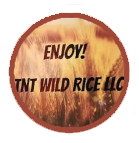Learn More
How Wild Rice Is Harvested and Used
“Wild rice” is a highly nutritious grain. The grain is native to North America. It’s naturally abundant in the cold rivers and lakes of Minnesota and Canada, wild rice was the staple in the diet of the Chippewa and Ojibwa Indians, native to this region. This aristocratic grain combines a nut like flavor with a distinctive texture, offering elegance’s and a touch of gourmet to any meal.
Harvesting is the process of gathering wild rice kernels from their stalks. Other than a canoe, the only tools required for the harvest are those to propel and to knock the ripe kernels into it. Harvesters use a long pole, forked at the end, to push the boat and a pair of wooden sticks to knock the kernels into the boat. Today, most wild rice is cultivated (by machines), yet it remains a natural product.
We offer both hand picked and cultivated wild rice. If you have tried both organic and cultivated wild rice, you noticed distinct differences in the taste, texture, smell, and cooking time. Because of the way cultivated wild rice is processed, it takes twice as long to cook as compared to hand picked wild rice.
Wild rice is a nutritional grain that has its own distinctive flavor. It needs little ornamentation. Simply toss cooked wild rice with butter and seasonings or serve for breakfast with sugar and cream. Wild rice adds a distinctive flavor to any dish. Wild rice is used in a variety of foods such as appetizers, soups, salads, stews, casseroles, dressings, and desserts. In recent years, wild rice has been used in breakfast cereals, muffins, pancake mixes, breads, and cookies.
Nutritional Facts
 |
Wild rice is a healthy, natural food with no preservatives or additives. |
 |
Wild rice is low in sodium, fat, calories, and contains potassium and B vitamins. |
 |
A low calorie carbohydrate, one cup of cooked wild rice only contains 130 calories. |
 |
Wild rice contains more protein than other kinds of rice. |
 |
Excellent source of fiber and vitamin E, a cancer fighting antioxidant. |
